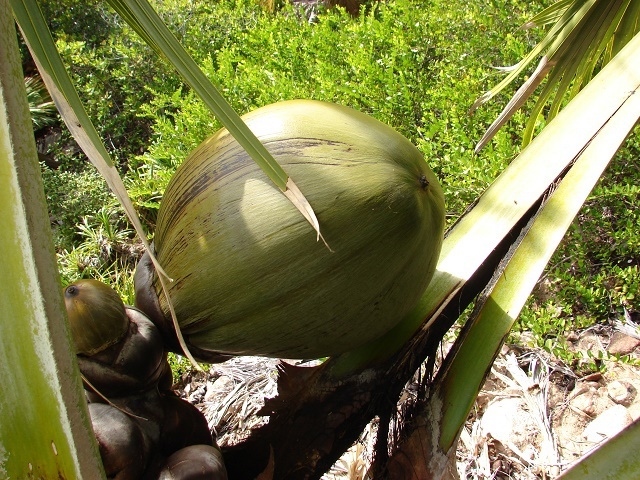New census aims to aid survival of Seychelles’ endemic coco de mer

The survey will be done on the islands of Seychelles where there are coco de mer trees. (Global Vision International)
(Seychelles News Agency) - A new census will be undertaken by Seychelles’ Ministry of Environment to allow better management and ensure the survival of the coco de mer – oversized nuts endemic to the island nation.
The survey will cover all government and private properties where coco de mer trees grow.
Solene Happert, a consultant for the forestry section in the Ministry of Environment, Climate Change and Energy, told SNA that the exercise will allow the ministry to have more and better control of the species.
“The idea behind such a survey is to compile all these data in a database and on a map in order to have an overview of the total number of nuts per tree and their exact distributions per locations. Having an oversight of the resource is indispensable to be able to have a control of its management,” said Happert.
The survey will be done on the islands of Seychelles – a group of islands in the western Indian Ocean – where there are coco de mer trees. These include the three main islands Mahe, Praslin and La Digue as well as Fregate, North Island, Felicite, and Silhouette.
 |
| The survey will cover all government and private properties where coco de mer trees grow. (Gerard Larose) Photo License: CC-BY |
Happert said that “all the information collected will be compiled on a single database differentiating between juveniles, males, and females in distinct colors.”
The consultant said that this will give the authority information that would “also enable us to understand if the environmental factors such as the altitude, the soil characteristics influence the nuts are grown and the sex of the tree.”
Happert explained that for coco de mer trees found in nature reserves, it will be the responsibility of the Seychelles Islands Foundation, the Seychelles National Parks Authority, Fond Boffay and Fond Ferdinand to conduct their own surveys.
The Lodoicea, commonly known as the coco de mer, or double coconut, is endemic to the Seychelles islands. The largest forest of the coco de mer is found on Praslin, at the Vallee de Mai – a UNESCO world heritage site.
Curieuse Island is the only island apart from Praslin where the palm grows in its natural state. A protected area, Curieuse is managed by Seychelles National Parks Authority.
The chief executive of the authority Flavien Joubert said that updated data on the coco de mer is readily available.
“The GVI (Global Vision International) is currently doing ongoing monitoring of the coco de mer on Curieuse, and we have updated information as well as GPS points. Our data is up to date. Some were updated only last year.”
Joubert said that since 2010, Global Vision International -- a British organisation -- has set up an expedition base on Curieuse. “These volunteers have been complementing our work where conservation is concerned and has helped immensely with the coco de mer monitoring.”
The national census is expected to start in March, once a local consultant is contracted. The contractor will have three months to conduct the census with other groups including students from the University of Seychelles.
Happert said the census should be done by several groups of 2 or 3 persons. Every group will have its selected parcel.
“For each parcel, the groups must note the parcel number, mark the tree by writing in red its number on the trunk if the tree is accessible. They will also need to mark the sex of the tree - M: male, F: female, J: juvenile or U for unknown” explained Happert.
In addition, the group will also need to mark the GPS coordinates if the tree is accessible. If it is not they are expected to give an estimation. Happert the group will need to “count the number of nuts and also indicate whether they are juvenile, premature and mature.”
Happert said with this survey and having the up to date data will also make it easier to limit poaching. “For each tree, we will be able to see the number of nuts still in the tree, the number of nuts harvested legally and the name of the person who would have bought one or several nuts. Hence, it will be easier to see quickly the trees which are missing nuts after an illegal harvesting and their locations.”





